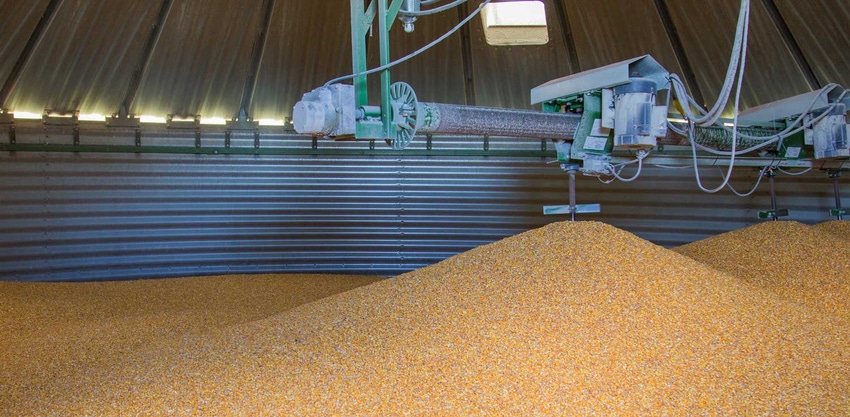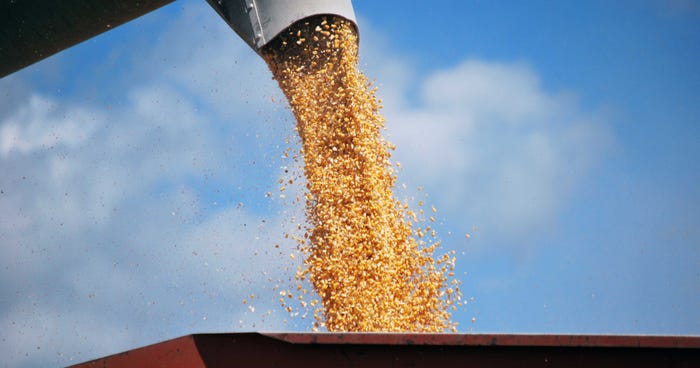
During the recent 2021 Alabama Grain & Soybean Conference a group of growers came together to discuss their experience with on-farm storage. All said they were pleased with their decision to bulk up the grain holding capacity on the farm and for putting in driers to provide the flexibility to store and market the grain like they wanted.
Clemson University engineer Aaron Turner also provided some takeaways for growers looking to get into advanced grain handling or expanding their current capacity during the Dec. 13 session in Decatur.
The farmer-panel included Stuart Sanderson, who farms in north Alabama with his relatives Chad and Mike Henderson.
“One important thing to remember is you have to scale to the scope of the operation. What is your intent with that grain once it comes out of the field? How do you want to handle it and sell it?” Sanderson said. “With a grain drying system, the most important things, of course, is dry grain. But just as important, no matter what system you have, is getting the grain in there and getting the grain out of it.”
Sanderson said they started drying their grain on-farm many years ago with a GT dryer. “And if you ever ran one of those systems you know (drying) 3,000 to 3,200 bushels a day was a big deal, but it was the best we had at the time.”
Grain in and out
Henderson Farms now uses a GSI continuous flow drying system, which runs on propane. They use a loop system, which greatly improves the efficiency of “getting the grain in and getting it out.” Sanderson runs 350,000 to 380,000 bushels of corn through the drier each year.
Matt Miles farms in Arkansas. He installed grain bins two decades ago and has added to his capacity almost annually since, he said. “And it’s one of the best decisions I made for the farm,” he said. The farm has 36-foot to 60-foot bins with total of about 800,000-bushel capacity.
This last season was his first using grain driers on-farm. Like many in the Deep South, Miles starts corn harvest the last of July or first of August. The new Nikklo mixed-flow drying system helped get some corn in and off the farm in a timely fashion to capture some premium prices at the time on some September delivery.
“So, I'm really high on the corn dryer right now. A lot more than I've ever been,” Miles said.

It’s important to scale to the scope of the operation. What is your intent with that grain once it comes out of the field? How do you want to handle it and sell it? (Credit: Brad Haire)
Nick McMichen farms in Cherokee County, Ala. A decade ago, he started with a smaller bin system. Today, McMichen has 100,000-bushel capacity 36-foot GSI bin system with a Shivver drier, which uses an auger system. He says it as an entry-level system for his operation, which is cotton heavy, “but we farm to make money.”
McMichen also grows corn and soybeans, “and being able to harvest soybeans before they rot in the field and have some place to go with them still helps us out across the operation,” he said.
McMichen said for a 1,000-acre-or-less grain grower, the Shivver system “worked well for us because from an economic standpoint, we didn't have to put up an elevator leg. It just used the facilities we had. … The toughest part about it was trying to put it in during COVID when there were no supplies, and we were running tight. Would’ve liked to have gotten in earlier but there was nothing we could do about that.”
He now has 500 acres of wheat planted for harvest later this year. “I like to double-crop cotton behind wheat. So, to start drying wheat and maybe gain a week or better of time for the double-crop has given us good results, and the flexibility can make the difference in making it or not,” McMichen said.
Higher moisture
Sanderson said knowing how to use, and maybe push, the drier allows his operation to harvest and handle higher moisture corn, as high as 25% to 28% moisture, and still offset the drying expense with the flexibility it adds along with quality and higher yield in the bins.
Clemson research shows coring and leveling a bin before drying improves drying uniformity. Once the grain is dry, check the grain often and use good aeration practices to reduce moisture migration. Turner also suggest using temperature or moisture cables to monitor the drying process and conditions in storage.
Aaron Turner, the Clemson engineer, said when the relative humidity is less than 65% in a grain system’s pore space mold growth is stopped, and insect activity is greatly reduced when temperatures go below 40 degrees.
Also, Sanderson said, to keep pests at bay maintain a clean barrier around the grain bin. He keeps a 25-foot to 30-foot perimeter blown and cleaned daily around his bins. For pesticide, he swears by a product called Diacon, which he says he has no financial or marketing ties too. “It just works,” he said.
For timing drying, Turner said, it depends on moisture levels, outside environmental conditions and airflow. He suggested checking to make sure fans push enough airflow for the bin, or about two cubic feet of air per minute/bushel, or, put another, 2 cfm/bu.
About the Author(s)
You May Also Like






